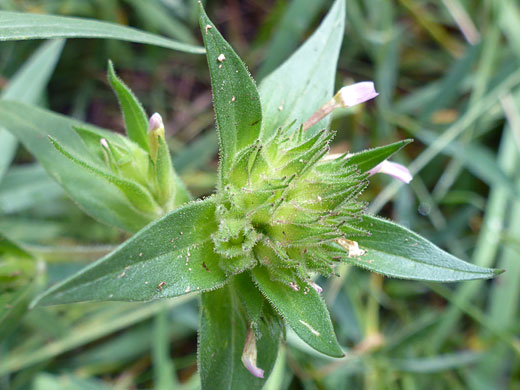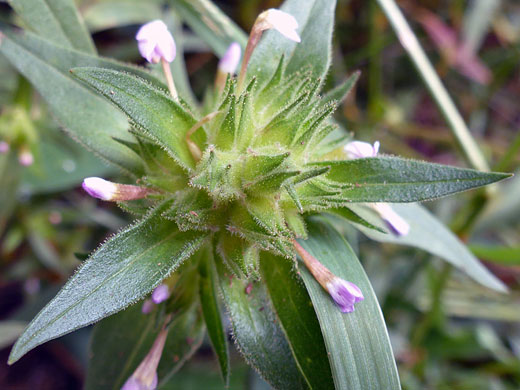
Tubular pink flowers and green bracts - collomia linearis along the Manns Peak Trail, La Sal Mountains, Utah
Common names:
Tiny trumpet, narrow-leaved collomia
Family:
Scientific name:
Collomia linearis
Main flower color:
Range:
All the western states except the southern Great Plains
Height:
Up to 20 inches
Habitat:
Open woodland, meadows, disturbed ground; up to 12,000 feet
Leaves:
Sessile, alternate, linear to narrowly lanceolate, up to 3 inches long
Season:
May to September
Flowers of collomia linearis are small in relation to the leaves; they are produced in dense, bracted clusters of up to 20, at the top of the short, thick stems, and are about half an inch long, with a tubular corolla that opens to five lobes, held at right angles. The corolla lobes are pale pink to purple, whitish at the base. The five stamens are attached at different levels inside the corolla tube. The anthers are not exserted. When fully open the flowers are a quarter of inch in diameter. The flowers lack stalks.
Plants produce several stems, which are generally unbranched, and are usually finely glandular hairy (especially towards the top), as are the leaves, where the hairs are most dense along the margins. Lower stem leaves may be toothed; upper stem leaves are entire, and narrower. Leaves have a narrow, lighter colored midvein and a pair of much fainter side veins.
Plants produce several stems, which are generally unbranched, and are usually finely glandular hairy (especially towards the top), as are the leaves, where the hairs are most dense along the margins. Lower stem leaves may be toothed; upper stem leaves are entire, and narrower. Leaves have a narrow, lighter colored midvein and a pair of much fainter side veins.
All Contents © Copyright The American Southwest | Comments and Questions | Contribute | Site Map


